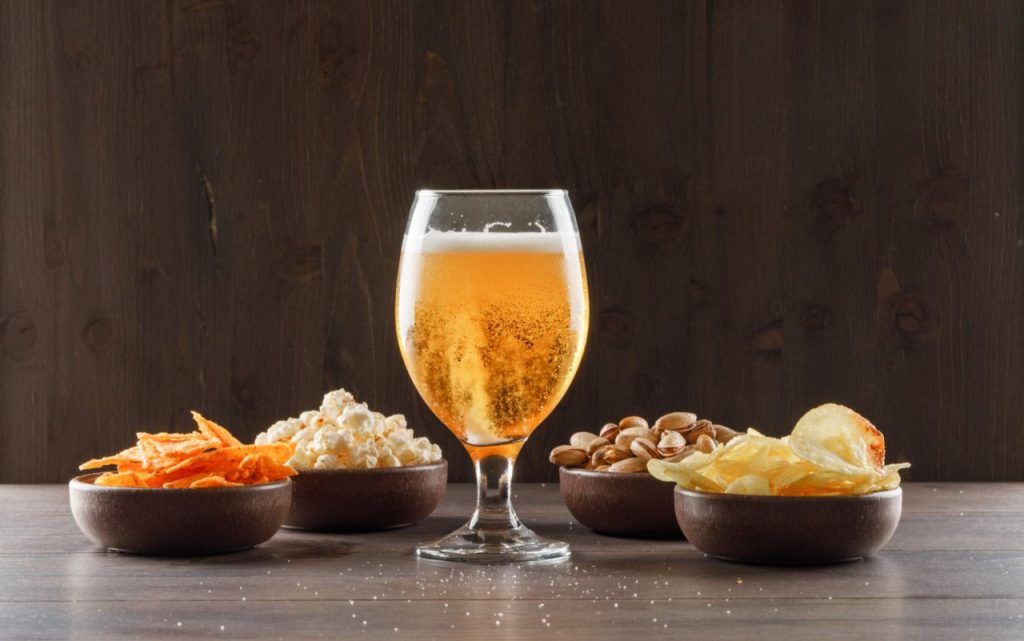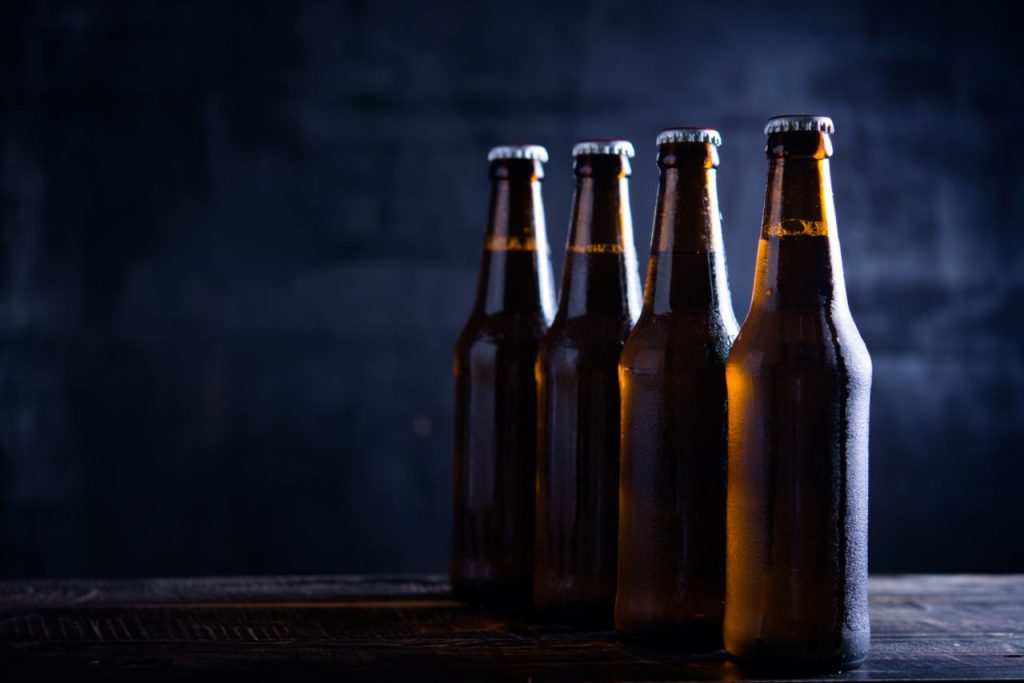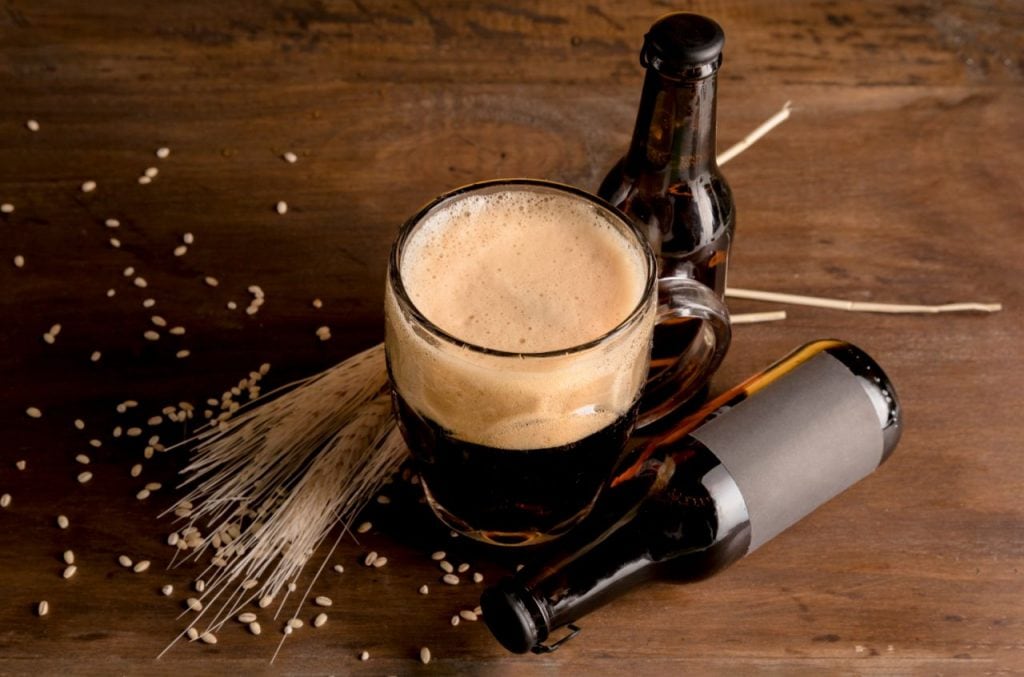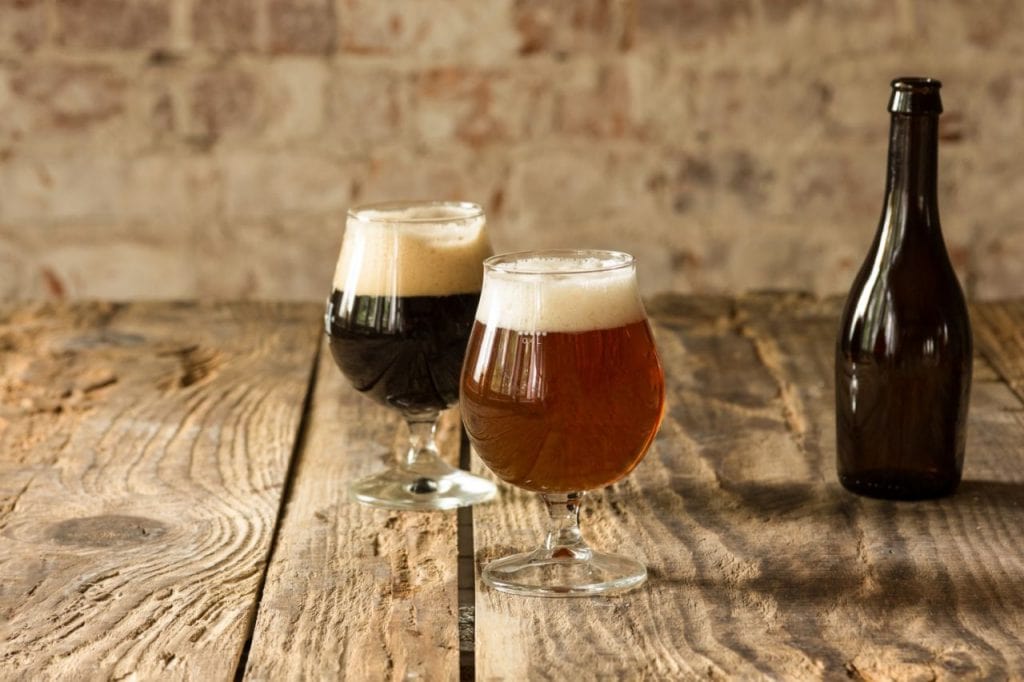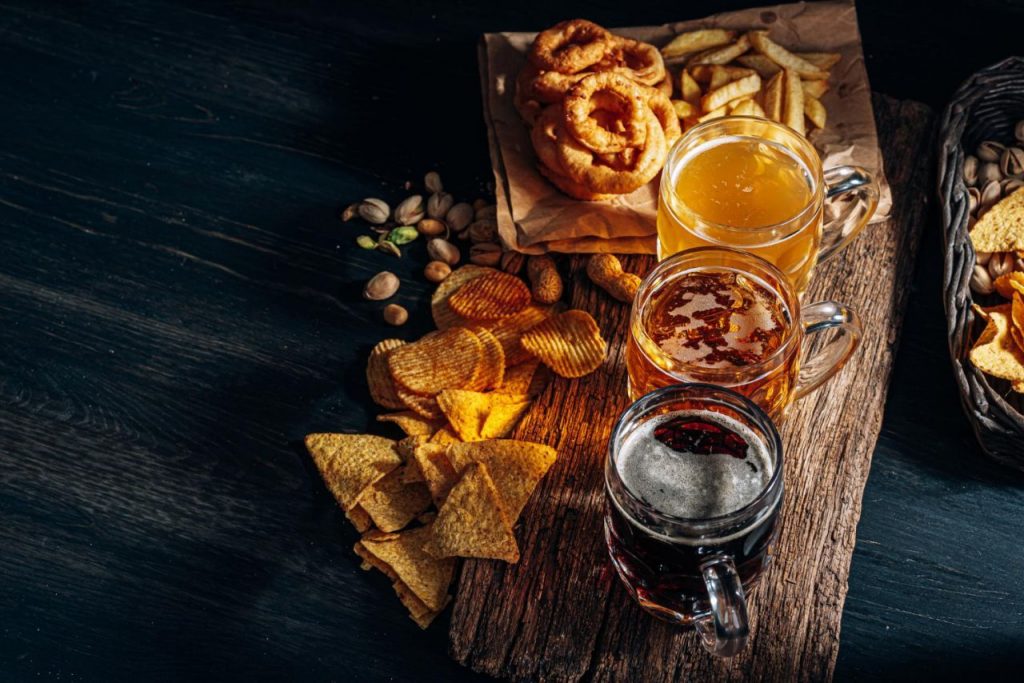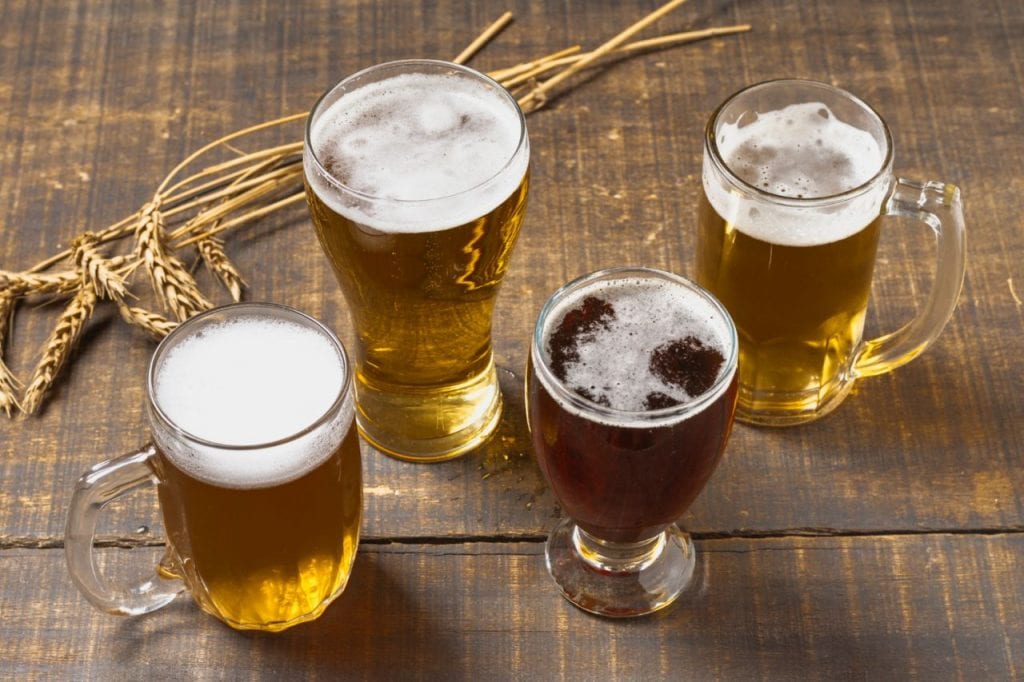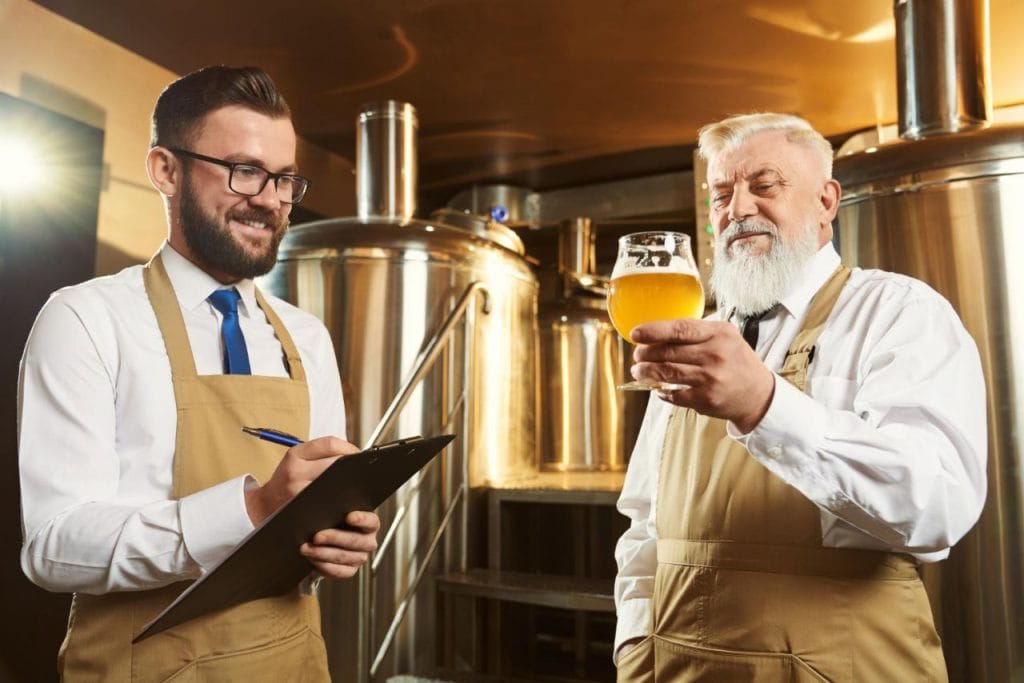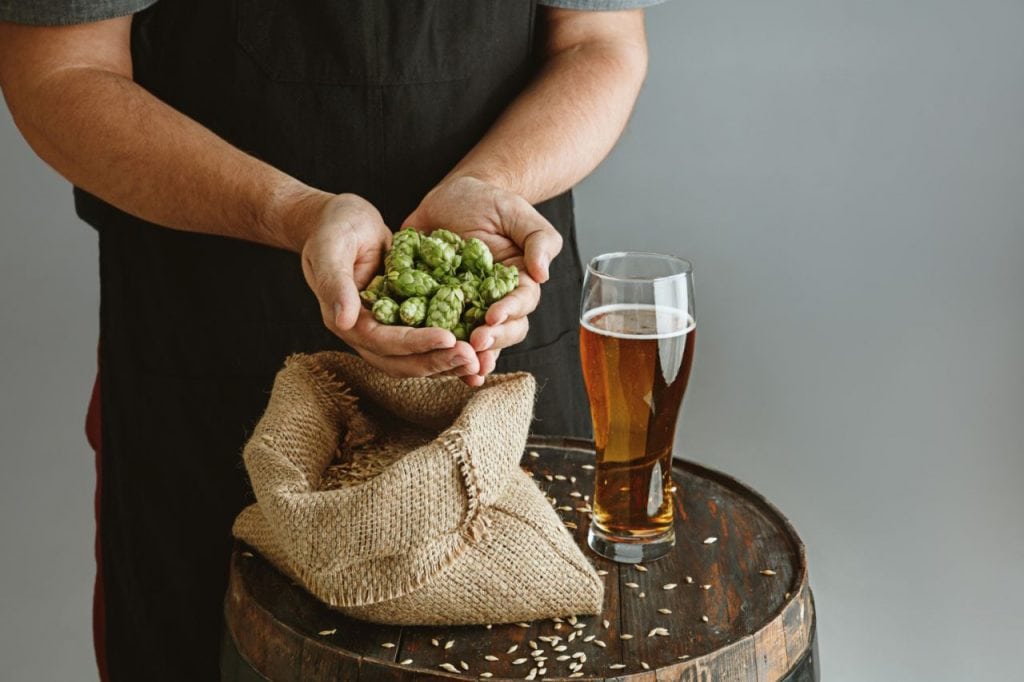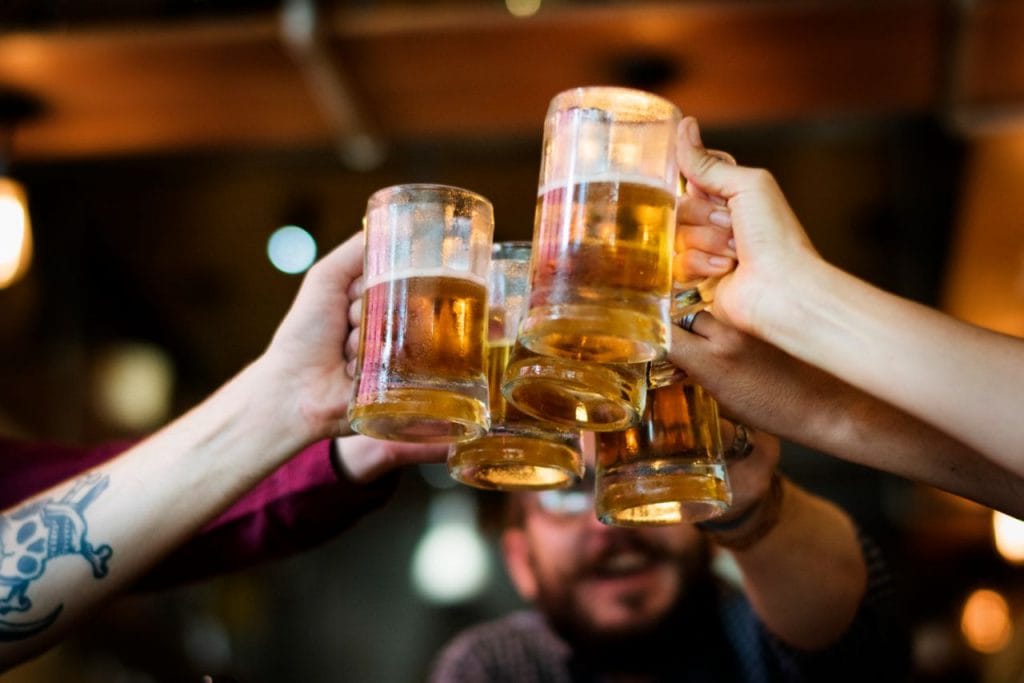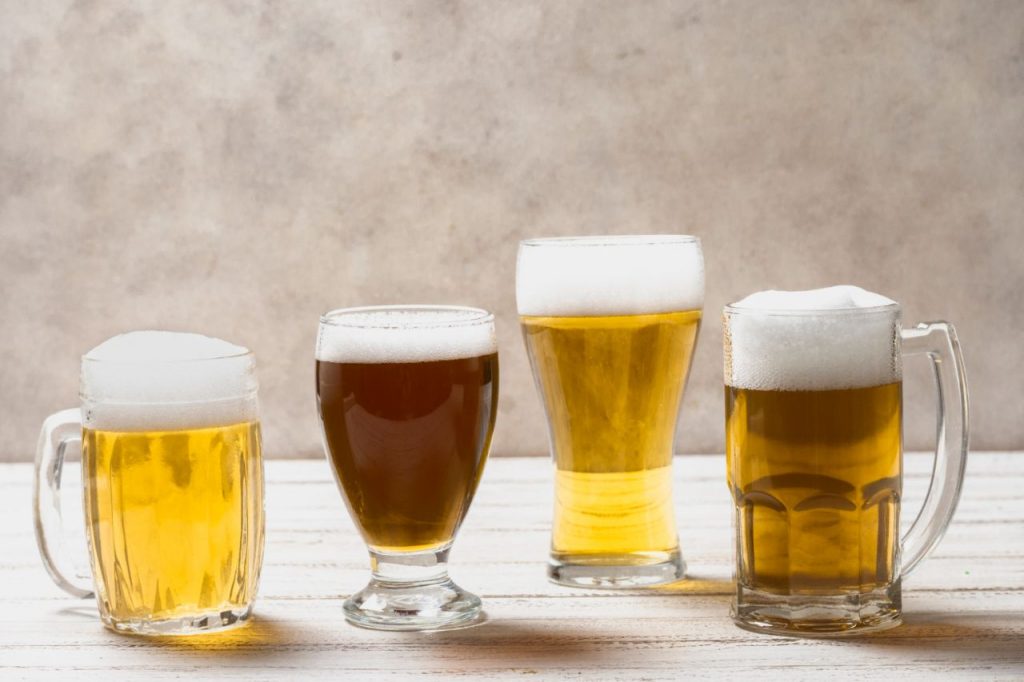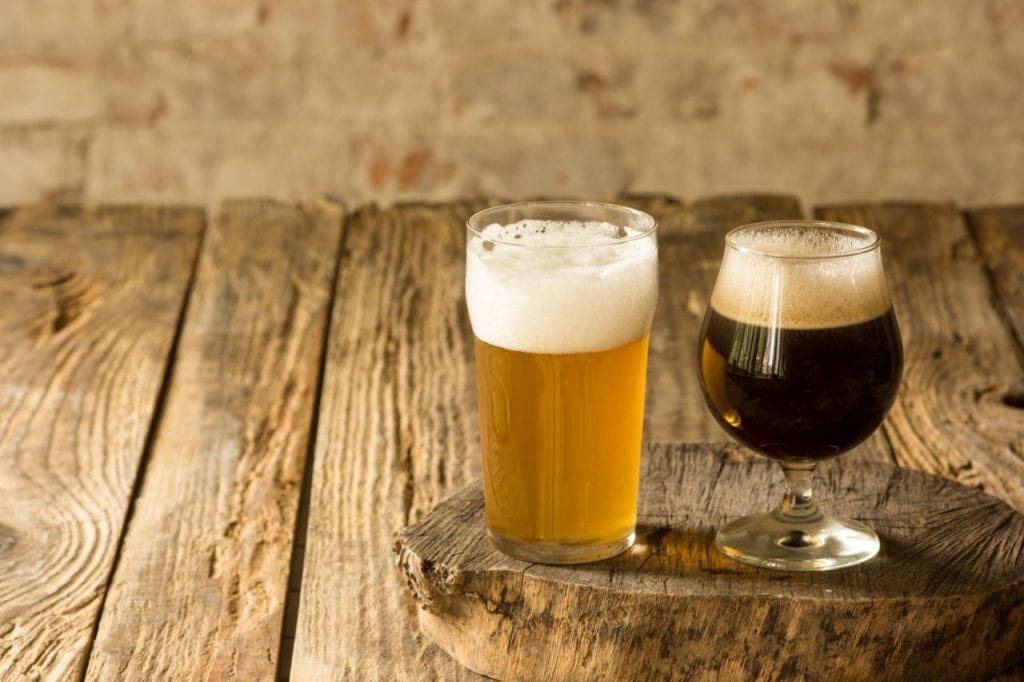It is a well-known fact that beer plays an important part in forming male bonds and helps men feel more a part of a community. This is one of the primary reasons why men enjoy drinking beer so much. Evidence supports the hypothesis that engaging in social activity elevates mood by triggering the release of endorphins. Beer drinkers, in particular, have been shown to have a lower risk of developing cardiovascular diseases than non-beer drinkers.
Drinking alcohol in moderation, defined as one to two drinks per day, has been shown to reduce the risk of coronary heart disease, atherosclerosis, and heart attacks by approximately 30 to 50 per cent compared to individuals who don't consume alcoholic beverages. It is a well-known fact that beer plays an important part in forming male bonds and helps men feel more a part of a community.
This is one of the primary reasons why men enjoy drinking beer so much. Evidence supports the hypothesis that engaging in social activity elevates mood by triggering the release of endorphins.
When we taste beer, the brain releases dopamine, a chemical that gives us a sense of well-being and is responsible for the chemical response.
According to a study just released today, people are enticed to drink more beer when they get a taste of beer. Compared to beer, drinking Gatorade resulted in a sizeable increase in the body's dopamine.
Hops are responsible for the majority of the bitterness that can be found in beer. According to Lovelace's explanation, drinking a glass of lager causes three of the brain's bitter receptors to become activated.
This occurs due to the beta and alpha acids found in hops and the low level of ethanol found in beer.
Yeast is responsible for producing the molecules that are responsible for giving ale and lager their distinctive aroma. Beer owes a significant portion of its flavour to the aromatic compounds produced by yeast as it digests the sugars in the beer's ingredients; nearly all wild yeast also produces these pleasant smells and tastes as it digests the sugars in its ingredients.
Beer and other alcoholic beverages are common social drinks. The presence of bars and pubs in a particular neighbourhood gives that area a distinct sense of community. This is where one can have a good time and make new friends.
Because beer is the most popular alcoholic beverage in these areas, it has evolved into an essential beverage that people turn to for both comfort and social connection.
9 Reasons Why People Love Beer
It Tastes Good
Some may argue that this is a contentious reason, given that people's tastebuds are uniquely their own.
We disagree. Beer comes in such a wide variety of flavours that it is virtually impossible for someone not to find at least one that they enjoy drinking.
People who don't believe they like beer should try a fruity lambic or a light and bright hefeweizen, which come highly recommended by our staff. You can even get your hands on champagne beer!
It Gives You A Positive Mental State
Beer, like other forms of alcohol, has the potential to give its consumers a pleasant buzz. But, on the other hand, beer typically has an alcohol content that is not very high—only about 4 to 6 per cent.
This is wonderful because it lessens the possibility that alcohol will sneak up on you and render you inebriated unless you drink an unusually potent beer. Even more interesting is a discovery made by the Indiana Alcohol Research Center.
They discovered that just the flavour of beer, without any effect from the alcohol, can cause your body to produce dopamine, which in turn makes you feel good.
It's Refreshing
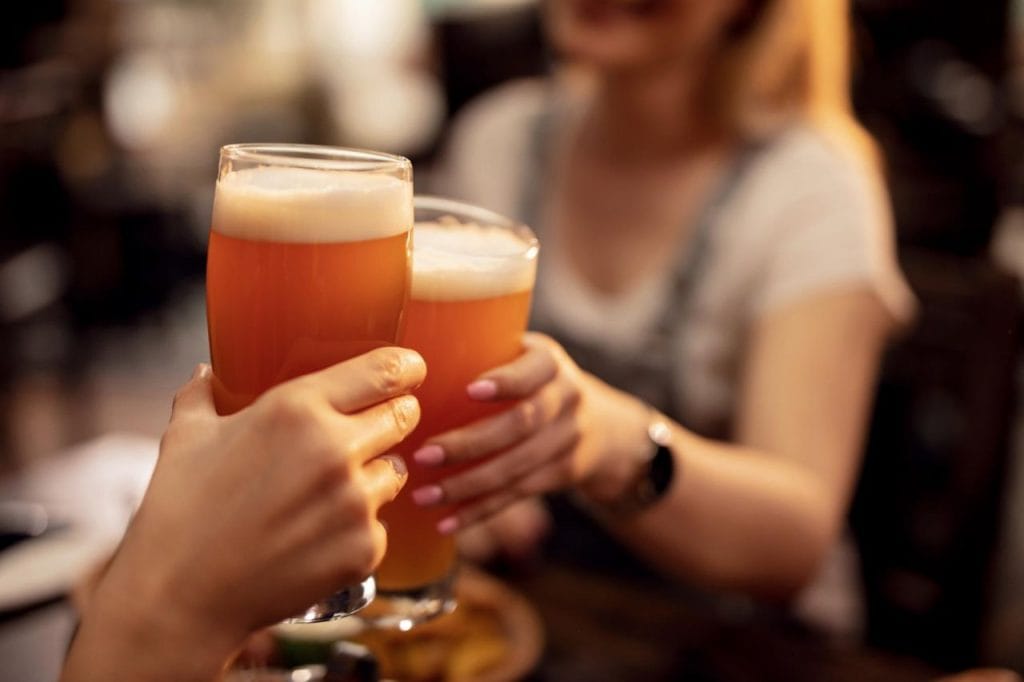
Nothing is more refreshing on a hot day than sips of a cold, carbonated beer. Even though it technically causes dehydration, drinking beer can make you feel and taste refreshing. Beer is the ideal beverage to beat the heat because of its refreshingly light and fruity flavours, bubbly carbonation, and chilly temperatures.
It's Beautiful
There are a lot of beers that have been brewed to perfection, and they all pour a beautiful colour.
Beer can be quite attractive, with styles ranging from cloudy, golden wheat beers with towering heads to sour beers with a ruby-red hue.
In addition to the beer itself, the packaging of beer and the handles on beer taps can be works of art thanks to the increasing number of breweries collaborating with artists to differentiate their products.
Please have a look at some of our favourite tap handles here and have a look at some of our favourite beer packaging here.
It Has Limitless Diversity
In craft beer, you can find just about any flavour imaginable. Over 2,800 small-scale breweries can be found in the United States, each of which has its own individual approach to beer production.
The choices range from a banana bread beer to a brew flavoured with Sriracha, and the possibilities are virtually endless.
It's Communal
Beer is a great beverage for social gatherings, whether you and your friends are drinking a pint at the neighbourhood bar or splitting cans of beer at your friend's house party. It makes your tongue more pliable, which makes conversation easier, and it gives you a wide variety of flavours to talk about.
The best part is that if you take it easy and sip it, you won't get too drunk, which means you won't embarrass yourself (at least, not because of alcohol).
Historical
Beer was consumed by ancient farmers who built the first agricultural civilizations and Egyptian workers as they toiled along the Nile river. Some experts even believe that beer was the primary factor that led to the development of civilization as we know it today.
You are participating in a time-honoured ritual that has brought happiness to people's lives throughout history simply because you drink beer.
It Is A Cultural Aspect
When it comes to beer, many nations, states, and even cities each have their unique specialty. For instance, the cask ales produced in England and the California common beer produced in California are well-known worldwide.
As a result, a sense of identity and community can be gained by drinking a local beer that is a personal favourite and then sharing it with others.
It Encourages Creative Thinking In You.
When we need a little boost in creativity (and we're not on the job), one of our favourite ways to get our minds going is by sipping on some beer. It's been shown that drinking beer can stimulate your creative process by helping you feel more at ease and less anxious about the things going on around you.
Because of your increased creative capacity, you may find that you perform better in social and artistic settings.
What Makes Alcohol So Addictive
People with a substance use disorder, such as alcoholism, will probably always be tempted to use more of the substance, and if they are not treated for it, they will use far too much of it. In the United States of America in 2015, 66.7 million people reported binge drinking within the previous month.
Nevertheless, most alcoholics tend to fight the idea that they cannot control their alcohol consumption on their own, even though they face the possibility of disastrous and embarrassing consequences.
This is because they are under the impression that they can prevent themselves and others from being harmed by it.
It is possible that gaining a better understanding of society's expectations and the reasons why alcohol is so addictive can assist in shedding light on why professional resources are, in the majority of cases, absolutely necessary for recovery.
Those who are caught in the cycle of addiction, as well as social traps, may be able to find their way back to their "authentic self" and away from danger with the help of treatment of sufficient quality.
Most events geared toward adults will have at least one or two alcoholic beverage options. At receptions following weddings, it is customary to raise a glass of champagne in a toast to the future of the newlywed couple.
A lot of people toast the new year with alcoholic beverages. Even casual dinner gatherings and meals out almost always include at least one or two drinks, if not an entire bottle.
People may eventually conclude that social gatherings cannot take place without the presence of alcohol as a result of the persistent pressure to drink. As a direct consequence, the prompts to drink can quickly become overwhelming. And unfortunately, excessive drinking is frequently the result of this.
In addition to being the "ideal complement" for many events, alcohol comes with several specific characteristics that can be utilized in various ways during social gatherings. According to research, drinking alcohol can dull the senses to the point where people forget their specific inhibitions and worries.
This can be a very dangerous effect. This phenomenon is referred to as "alcohol myopia" in a report that was published in Addictive Behavior.
People who are in this state experience a momentary release from their anxiety and depression. They might be more outgoing and enjoyable to have a conversation with. Alcohol can bolster one's sense of self-importance and confidence.
People with underlying mental health conditions such as depression or social phobias may develop an addiction to alcohol as a means of self-medicating the unpleasant symptoms they experience due to these conditions.
What Causes Alcoholism?
Addiction to alcohol, which is also referred to as alcoholism, is a disease that can affect people from all walks of life. The likelihood of someone developing an addiction to alcohol can be affected by a number of factors, including genetics, gender, racial background, and socioeconomic status, among others.
But there isn't just one thing that caused it. Instead, having the disease can be caused by a combination of mental, genetic, and behavioural factors.
It is essential to emphasize the fact that alcoholism is a genuine disease. A person who is addicted to alcohol may not be able to control their actions because it can cause changes in the brain and the neurochemistry of the brain.
There are a number of different manifestations that alcoholism can take. The severity of the disease, how frequently an individual drinks and the amount of alcohol that they consume all vary from person to person. While some people drink heavily throughout the day, others will engage in binge drinking and then refrain from drinking for an extended period of time.
In most cases, a person is considered to have an alcohol addiction if they are extremely dependent on alcohol and are unable to abstain from drinking for an extended period of time. This is true regardless of how the addiction manifests itself.
Symptoms Of Alcoholism?
Recognizing someone who is addicted to alcohol can be challenging. Alcohol, in contrast to cocaine or heroin, is widely available and tolerated across various cultures. It is frequently the focal point of social situations and is intimately connected to occasions of celebration and enjoyment.
Many people consider drinking to be an essential part of their lifestyle. However, when alcohol consumption is considered normal in a society, it can be difficult to differentiate between someone who occasionally partakes in social drinking and someone who has a significant issue with their drinking.
The following are some symptoms of alcohol addiction:
- increased usage, either in terms of quantity or frequency
- high tolerance for alcohol or the absence of symptoms of "hangover."
- Drinking at inappropriate times, such as first thing in the morning, or in inappropriate places, such as the workplace or a church.
- preferring to be in settings where alcoholic beverages are available while avoiding those in which none are
- Shifts in friendships; a person struggling with alcoholism may find themselves gravitating toward people who drink themselves heavily.
- avoiding getting in touch with friends and family
- concealing alcoholic beverages or concealing oneself while drinking
- a dependency on alcohol to carry out normal activities in day-to-day life
- symptoms such as increased sluggishness, depression, or other emotional problems
- problems with the law or in one's professional life, such as being arrested or fired from a job
Be on the lookout for early warning signs of addiction because the disease typically worsens over time. A person who is addicted to alcohol may be able to avoid the disease's more serious effects if they are diagnosed and treated for their condition at an early stage.
It is best to approach the person you are concerned about in a manner that is supportive if you have reason to believe that they are addicted to alcohol. Please stay away from embarrassing them or making them feel guilty in any way. This may cause them to withdraw their cooperation and become more resistant to your assistance.
Treatment Options For Alcoholism?
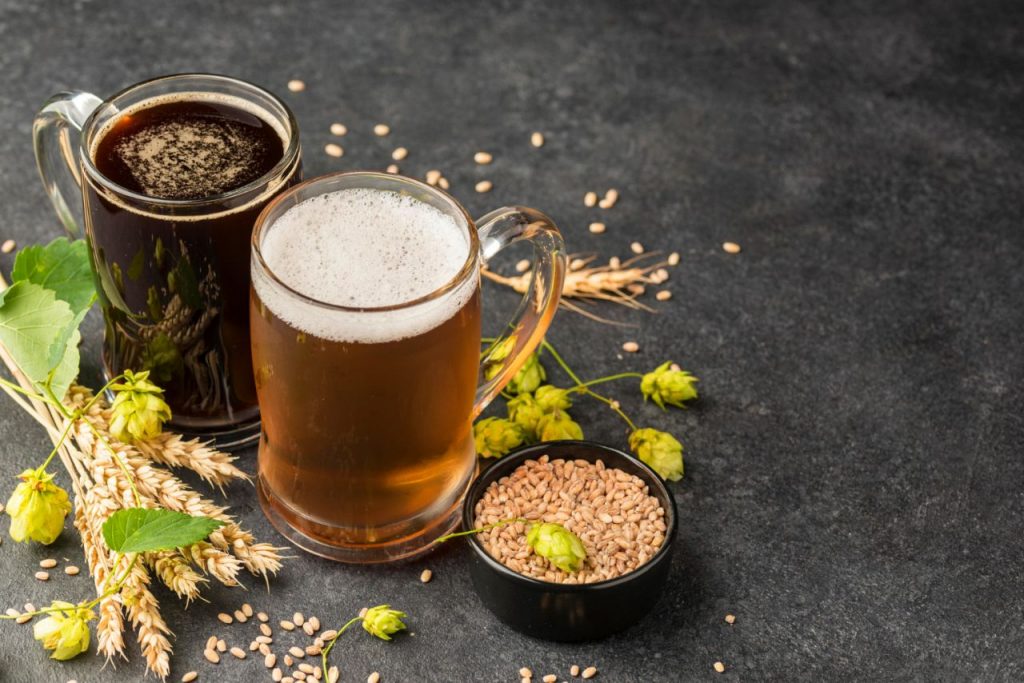
The treatment of alcoholism can be difficult and convoluted at times. In order for treatment for alcoholism to be successful, the individual struggling with addiction must have a strong desire to abstain from drinking. If they aren't ready to give up drinking, you can't make them do it against their will. The individual's motivation to advance their skills is critical to their level of success.
A person who struggles with alcoholism must make a commitment to their recovery that lasts a lifetime. There is no easy solution, and it requires constant maintenance. Because of this, there are a lot of people who believe that alcoholism can never be "cured."
Rehab
A rehabilitation program, either on an outpatient or an inpatient basis, is one of the most common initial treatment options for someone who is addicted to alcohol. The duration of an inpatient treatment program can range anywhere from one month to twelve months.
It can assist a person in managing the withdrawal symptoms as well as the emotional challenges they face. Outpatient treatment entails providing the individual with day-to-day assistance while allowing them to continue living in their own home.
In addition, many individuals struggling with alcoholism enrol in 12-step treatment programs such as Alcoholics Anonymous (AA). SMART Recovery and Sober Recovery are two examples of support groups that do not adhere to the 12-step model of recovery from addiction.
There are also other support groups that do not follow this model.
When working on becoming sober, it is important to involve yourself in at least one support group of some kind. This is true regardless of the nature of the support group.
A person who is battling alcoholism and is a part of a sober community may find it easier to deal with the challenges of maintaining their sobriety in day-to-day life. Sober communities can also offer new and healthy friendships as well as share experiences that members can relate to.
Additionally, the individual struggling with alcoholism is held accountable by these communities, and they offer a safe haven in the event that they experience a relapse.
Other Options
Other treatments, such as those listed below, are also an option for someone who is addicted to alcohol.
- Drug Therapy
- Counselling
- Nutritional Changes
When treating certain conditions, a physician may decide to prescribe medication. For instance, antidepressants, in the case of an alcoholic who is self-medicating with alcohol to treat the depression that they are experiencing. Or, the physician could prescribe medication to help with other feelings that are common during the recovery process.
Therapy can be helpful in teaching an individual how to manage the stress that comes with recovery and the skills that are necessary to prevent relapse. Additionally, a healthy diet can help reverse the negative effects that alcohol may have had on a person's health, such as an increase or decrease in weight.
Treatment for alcoholism can involve a few different approaches at different times. It is essential for everyone to participate in a recovery program that offers assistance in maintaining sobriety over the long term. This may mean putting more of an emphasis on therapy for someone who is depressed or receiving treatment in an inpatient setting for someone who is experiencing severe withdrawal symptoms.
Conclusion
When we taste beer, the brain releases dopamine, a chemical that gives us a sense of well-being. Compared to beer, drinking Gatorade resulted in a sizeable increase in the body's dopamine. Drinking lager causes three of the brain's bitter receptors to become activated. Beer has evolved into an essential beverage that people turn to for comfort and social connection. Beer is the ideal beverage to beat the heat because of its light and fruity flavours and bubbly carbonation.
Drinking beer can make you feel and taste refreshing, even though it technically causes dehydration. Beer can be quite attractive, with styles ranging from cloudy, golden wheat beers with towering heads to sour beers with a ruby-red hue. Over 2,800 small-scale breweries can be found in the United States, each of which has its own individual approach to beer production. Drinking beer can stimulate your creative process. It can help you feel more at ease and less anxious about the things going on around you.
Because of your increased creative capacity, you may find that you perform better in social and artistic settings. In 2015, 66.7 million people reported binge drinking within the previous month. Alcoholism is a disease that can affect people from all walks of life. The likelihood of developing an addiction to alcohol can be affected by a number of factors, including genetics, gender, racial background, and socioeconomic status. Alcoholism can cause changes in the brain and the neurochemistry of the brain.
Many people consider drinking to be an essential part of their lifestyle. A person who is addicted to alcohol may be able to avoid the disease's more serious effects if they are diagnosed and treated for their condition at an early stage. Treatment for alcoholism can be difficult and convoluted at times. A rehabilitation program is one of the most common initial treatment options for someone addicted to alcohol. Outpatient treatment entails providing the individual with day-to-day assistance while allowing them to continue living in their own home.
Sober communities can also offer new and healthy friendships as well as share experiences. Treatment for alcoholism can involve a few different approaches at different times.
- It is a well-known fact that beer plays an important part in forming male bonds and helps men feel more a part of a community.
- This is one of the primary reasons why men enjoy drinking beer so much.
- Evidence supports the hypothesis that engaging in social activity elevates mood by triggering the release of endorphins.
- Beer drinkers, in particular, have been shown to have a lower risk of developing cardiovascular diseases than non-beer drinkers.
- Drinking alcohol in moderation, defined as one to two drinks per day, has been shown to reduce the risk of coronary heart disease, atherosclerosis, and heart attacks by approximately 30 to 50 per cent compared to individuals who don't consume alcoholic beverages.
- According to a study just released today, people are enticed to drink more beer when they get a taste of beer.
- Compared to beer, drinking Gatorade resulted in a sizeable increase in the body's dopamine.
- Hops are responsible for the majority of the bitterness that can be found in beer.
- Beer and other alcoholic beverages are common social drinks.
- The presence of bars and pubs in a particular neighbourhood gives that area a distinct sense of community.
- Because beer is the most popular alcoholic beverage in these areas, it has evolved into an essential beverage that people turn to for both comfort and social connection.
- But, on the other hand, beer typically has an alcohol content that is not very high—only about 4 to 6 per cent.
- They discovered that just the flavour of beer, without any effect from the alcohol, can cause your body to produce dopamine, which in turn makes you feel good.
- It's RefreshingNothing is more refreshing on a hot day than sips of a cold, carbonated beer.
- Even though it technically causes dehydration, drinking beer can make you feel and taste refreshing.
- Beer is the ideal beverage to beat the heat because of its refreshingly light and fruity flavours, bubbly carbonation, and chilly temperatures.
- In addition to the beer itself, the packaging of beer and the handles on beer taps can be works of art thanks to the increasing number of breweries collaborating with artists to differentiate their products.
- It Has Limitless DiversityIn craft beer, you can find just about any flavour imaginable.
- Over 2,800 small-scale breweries can be found in the United States, each of which has its own individual approach to beer production.
- As a result, a sense of identity and community can be gained by drinking a local beer that is a personal favourite and then sharing it with others.
- It's been shown that drinking beer can stimulate your creative process by helping you feel more at ease and less anxious about the things going on around you.
- Because of your increased creative capacity, you may find that you perform better in social and artistic settings.
- People with a substance use disorder, such as alcoholism, will probably always be tempted to use more of the substance, and if they are not treated for it, they will use far too much of it.
- Nevertheless, most alcoholics tend to fight the idea that they cannot control their alcohol consumption on their own, even though they face the possibility of disastrous and embarrassing consequences.
- It is possible that gaining a better understanding of society's expectations and the reasons why alcohol is so addictive can assist in shedding light on why professional resources are, in the majority of cases, absolutely necessary for recovery.
- A lot of people toast the new year with alcoholic beverages.
- People may eventually conclude that social gatherings cannot take place without the presence of alcohol as a result of the persistent pressure to drink.
- Addiction to alcohol, which is also referred to as alcoholism, is a disease that can affect people from all walks of life.
- It is essential to emphasize the fact that alcoholism is a genuine disease.
- Symptoms Of Alcoholism?Recognizing someone who is addicted to alcohol can be challenging.
- The following are some symptoms of alcohol addiction:increased usage, either in terms of quantity or frequencyhigh tolerance for alcohol or the absence of symptoms of "hangover.
- A person who is addicted to alcohol may be able to avoid the disease's more serious effects if they are diagnosed and treated for their condition at an early stage.
- In order for treatment for alcoholism to be successful, the individual struggling with addiction must have a strong desire to abstain from drinking.
- A rehabilitation program, either on an outpatient or an inpatient basis, is one of the most common initial treatment options for someone who is addicted to alcohol.
- The duration of an inpatient treatment program can range anywhere from one month to twelve months.
- When working on becoming sober, it is important to involve yourself in at least one support group of some kind.
- This is true regardless of the nature of the support group.
- A person who is battling alcoholism and is a part of a sober community may find it easier to deal with the challenges of maintaining their sobriety in day-to-day life.
- Other OptionsOther treatments, such as those listed below, are also an option for someone who is addicted to alcohol.
- Drug TherapyCounsellingNutritional ChangesWhen treating certain conditions, a physician may decide to prescribe medication.
- Or, the physician could prescribe medication to help with other feelings that are common during the recovery process.
- Treatment for alcoholism can involve a few different approaches at different times.
- It is essential for everyone to participate in a recovery program that offers assistance in maintaining sobriety over the long term.
- This may mean putting more of an emphasis on therapy for someone who is depressed or receiving treatment in an inpatient setting for someone who is experiencing severe withdrawal symptoms.
FAQ
How big is the average brewery?
Our calculations revealed that the average (mean) square footage per barrel at each individual brewery was 4.6 square feet, with the maximum being 40 square feet and the minimum being 0.2 square feet.
Why is craft beer better?
Compared to watery mass-produced beer, craft beer has a deeper and more distinctive flavour. The majority of craft brewers are quite passionate about the flavour and taste of their beer. In order to preserve or increase the quality of the beer, they devote the time and effort necessary rather than focusing on extensive marketing initiatives.
How do breweries work?
Beer is made by steeping a starch source (often cereal grains, with barley being the most common) in water and then fermenting the resulting sweet liquid with yeast. Commercial brewers can do it in a brewery, homebrewers can do it in their homes, or everyone can do it together.
Who invented beer?
No country consumes vodka like Russia. According to Euromonitor data, the average Russian consumes 17.3 shots of vodka each month. With no doubt, that is a world record.
Why is it called craft beer?
Traditional ingredients like malted barley are typically used to make craft beer; however, unusual and occasionally non-traditional components are frequently added for individuality. Craft brewers frequently participate actively in their local communities through philanthropy, product contributions, volunteer work, and event sponsorship.
Our calculations revealed that the average (mean) square footage per barrel at each individual brewery was 4.6 square feet, with the maximum being 40 square feet and the minimum being 0.2 square feet.
Compared to watery mass-produced beer, craft beer has a deeper and more distinctive flavour. The majority of craft brewers are quite passionate about the flavour and taste of their beer. In order to preserve or increase the quality of the beer, they devote the time and effort necessary rather than focusing on extensive marketing initiatives.
Beer is made by steeping a starch source (often cereal grains, with barley being the most common) in water and then fermenting the resulting sweet liquid with yeast. Commercial brewers can do it in a brewery, homebrewers can do it in their homes, or everyone can do it together.

